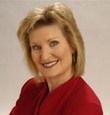Whether presenting your budget to the executive team or presenting information in a classroom, listeners have come to expect time for Q&A. It is their chance to get you to “meet the press,” so to speak—particularly on controversial points. But in addition to meeting others’ expectations, Q&A periods benefit you, the presenter.
Questions provide feedback on how your presentation was received and give you a chance to clear up any misunderstandings. The only problem—keeping on track when things go south. The following tips may help you keep your poise during a heated Q&A.
Never Announce a Certain Amount of Time or a Specific Number of Questions To do so limits your flexibility and creates dangers along the way. If you announce that you will take questions for half an hour and you get only two questions, the audience walks away with the impression that you gave a disappointing presentation that did not generate the expected interest.
If you say that you will take another three questions and the third question is a hostile one, you may be forced to end on a negative note from which it will be difficult to recover.
Stay flexible simply by making a general statement that you will take a few questions before you wrap up. Then, if there are none or only a few, you are safe to go directly into your prepared close. And if you get a challenging question or if a negative issue surfaces, you can prolong the discussion until you can find an opportunity to bridge to a more positive closing note.
Respond to Reinforce Your Points
Responses such as, “I’m glad you brought up that issue because it gives me a chance to elaborate on . . . ,” are a way to align listeners’ questions with points you really want to emphasize. You also can respond in a way that broadens or narrows the scope of a question’s focus. “The issue that most of the region will be concerned with is X; therefore, let me answer in this broader context.” Or “Yes, that’s the big-picture problem, but let me bring it a little closer to home with the more specific issue of Y.” So go in either direction to reinforce your key learning
point or your key message in an executive briefing.
Take Care Not to Respond with More than They Want to Know Maybe most important of all: When you field a question, be brief. If you take 10 minutes to answer the first few questions, some participants may fear antagonizing less interested participants by asking one that could lengthen your presentation by another half hour.
Make Your Body Language
, Voice, and Movement Support Rather Than Sabotage Your Message
Take charge with your posture, body language
, eye contact, vocal tone, and fresh comments. Do not be tentative. Project an attitude
of anticipation, eagerness, and confidence. Communicate to the audience that you have come to deliver value—before you ever open your mouth.
Practice Appropriate Techniques for Responding with Poise to the Ten Most Difficult Question Types
To say you can’t prepare for questions is to court disaster. Although you may never anticipate an off-the-wall question from your EVP about your current learning
management system, you can prepare and practice the techniques to handle the most difficult question types well: the hypothetical, the forced two-option, the long-winded, the limited interest, the “dumb,” the off-the-record, the show-off, the challenging/skeptical, the multiple, the hostile.
Identify and execute these techniques to tip the credibility scale in your favor.
Dianna Booher works with organizations to increase their productivity and effectiveness through better oral, written, interpersonal, and cross-functional communication. She is a keynote speaker and the author of more than 40 books (22 on communication) including The Voice of Authority, Booher's Rules of Business Grammar, Speak with Confidence, and Communicate with Confidence. Dianna is CEO of Booher Consultants, a communication training firm offering programs in presentations skills, business writing, and interpersonal communication. Successful Meetings Magazine named her to its list of “21 Top Speakers for the 21st Century.” Executive Excellence Publishing also named Dianna to its “Top 100 Thought Leaders” and “Top 100 Minds on Personal Development.” www.booher.com or call 800.342.6621 begin_of_the_skype_highlighting 800.342.6621 end_of_the_skype_highlighting.


